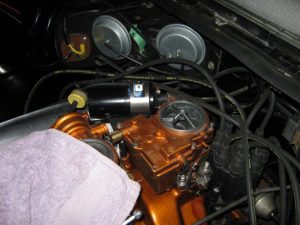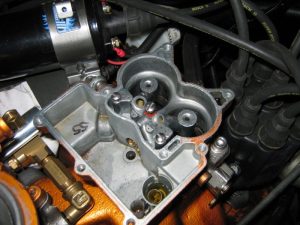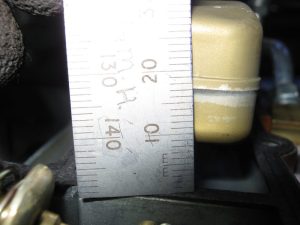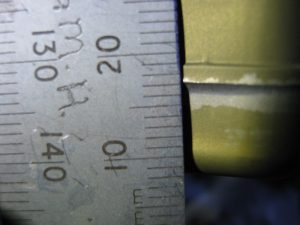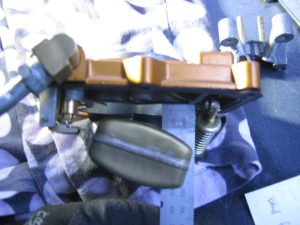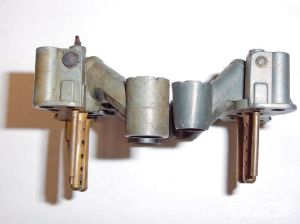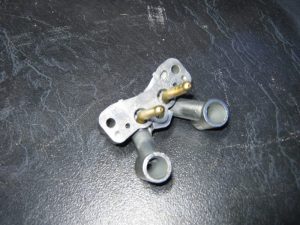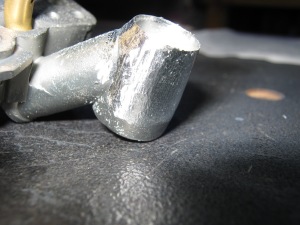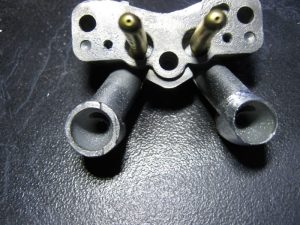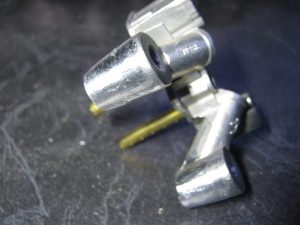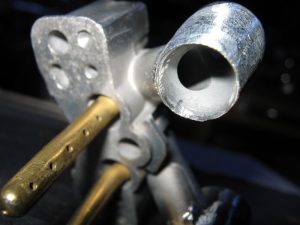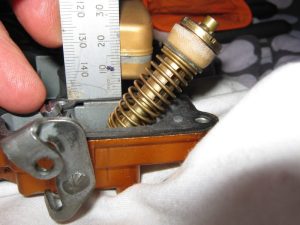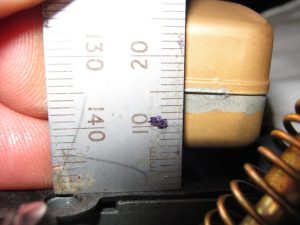The car is running well overall however I still am not happy with the three stooges (the carburetors).
With a cold start it fires straight away however it runs rough for the first 90 seconds (sounds like it is running rich). Once there is a little bit of heat in the combustion chambers it smooths out but I know that carbs can do better than this.
When I do a warm start, if the car has sat for more than 3 or 4 minutes it will crank for 4 or 5 seconds before it fires. I initially suspected the ignition as a problem, but based on the fact that it fires quickly when cold I am first looking at the carbs.
I decided to go back to basics and check the float levels. I have read a couple of times that warm start problems can arise if the float level is set too high. I decided to check the float levels for all three carbs, and also adjust the choke to throttle step up lever to open the throttle a little more when the choke is on to try and lean it out a little.
According to my 1959 Workshop Manual the float adjustments are as follows (converted to mm):
Float Level, measured with carb cover inverted from gasket surface (with gasket) to sharp seam of float: 18.4mm (end carbs) & 25mm (centre carb)
Float Drop, measured with carb cover right way up from gasket surface to base of float: 48.4mm for all carbs.
I started with the rear carb. Removing the screws and the accelerator pump linkage releases the top cover which includes the float and accelerator pump plunger.
With the cover removed you can see the float bowl, jets and venturis. The 55 written in the float bowl is the jet size. (55 thou diameter hole)
I inverted the cover and measured the float. 17mm to the sharp edge of the float which would make the fuel level 1.4mm higher than the specification. I adjusted the float until it measured as close as I could get it to 18.5mm.
I then rotated the cover and measured the float drop. It was 51mm. I adjusted the drop, which is done by removing the float and bending a tab.
This all went pretty swimmingly.
Tweak….
I read an article recently on the Hot Rod Network site which discussed modifying Rochester 2G carbs for racing, and there were a couple of interesting tips. There was one modification which mad perfect sense so I decided to do it while the tops were off. It involves tapering the outside of the venturi to remove the flat at the bottom, which makes for a much smoother transition as the two air streams reconnect and also increases the air flow rate. The pic below shows the full race mod however I decided not to shorten the venturi, just sharpen the lower edge.
I removed the venturi cluster from the rear carb.
I used my Dremel with a tapered carbide burr to remove material from the base of the venturi. I worked at it slowly to make sure I didn’t take too much off as it is much harder to put it back! The second pic below shows the difference.
I then proceeded to work on the second venturi until they were similar.
The whole exercise only took 5 to 10 minutes. Once complete, I gave it a blast with the air hose and reinstalled everything back on the carb.
I did the same process to the front carb and found that the float was also a little out.
When it came to the centre carb I measured the float at 15mm…..
This is significantly different to the 25mm specification for the centre carb, and made me think that the 25mm float setting was not correct. After pondering for a while I realized that because I have a 1958 Cadillac manifold, the carbs are all small base 2g’s. Some quick research confirmed that all three floats are set the same on the ’58. In 1959 & 60 the centre carb was different to the end carbs.
The 15mm setting would result in the fuel level being 3.5mm higher than spec, which might just possibly explain the difficulty starting when warm if fuel is finding its way into the manifold. It is a bit of a long shot, but I hope the adjustments make an improvement.
While the centre carb cover was off I also noted that there were 58 thou jets installed. I assembled everything back together and pressurized the system to check for leaks.
To summarize, all three floats were set so that the fuel level would be between 0.5 and 3.5mm higher than specified. I don’t know if this will make a difference….I guess we will find out. Not sure about jet sizes either; 55’s on the ends and 58’s in the centre are smaller than the 60’s installed on the ’59 and ’60 tri-powers, however they are also different carbs. I am planning on getting the car dyno tuned to sort out the mixtures once everything else is sorted.
I didn’t start the car tonight as it was a bit late, so that will have to wait for another day.

